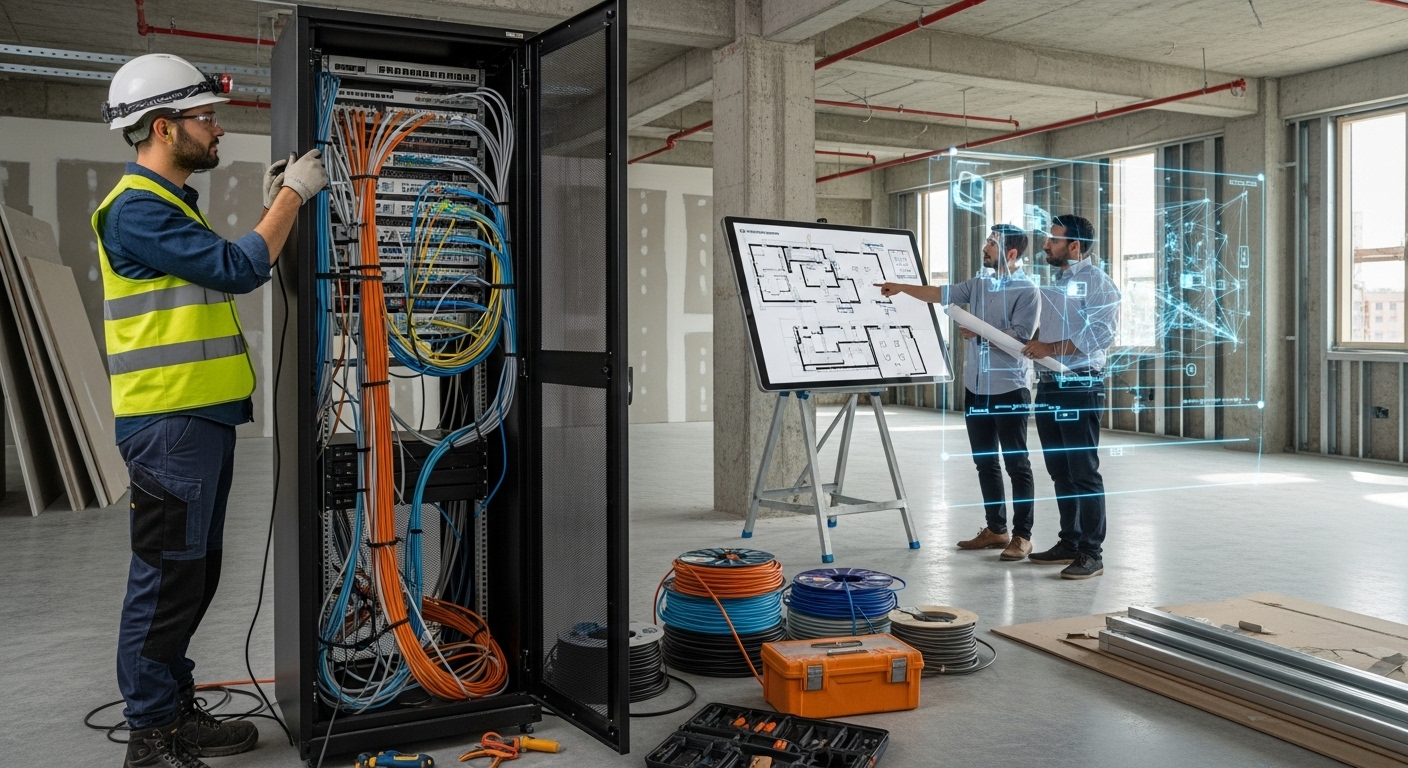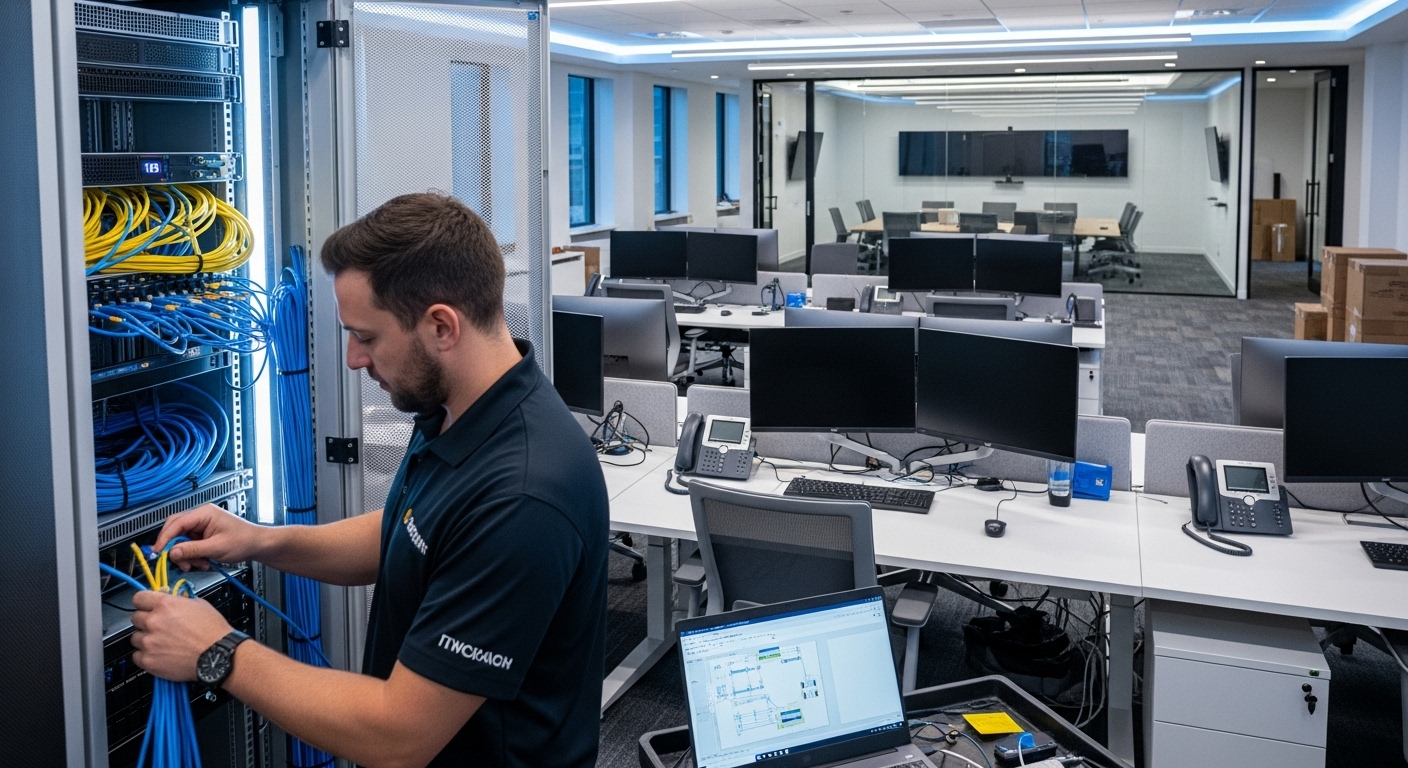In the vibrant and fiercely competitive landscape of today’s leading business hubs, the war for talent is won not just with salaries and benefits, but with culture and experience. An office is no longer merely a place of work; it is a physical manifestation of a company’s brand, values, and mission. This concept, known as space branding, transforms a physical environment into a strategic asset for attracting, engaging, and retaining top performers. It’s about creating an immersive experience that tells your company’s story from the moment someone walks through the door. For businesses aiming to thrive, understanding how to leverage their workspace as a cultural magnet is paramount. This guide explores the core principles of strategic space branding, providing a blueprint for turning your office into your most powerful recruitment tool.
Beyond the logo: defining your spatial brand identity
Effective space branding goes far deeper than placing a logo on the wall or using corporate colors in the decor. It begins with a foundational process of defining your spatial brand identity—a three-dimensional translation of your company’s core values, mission, and culture. The first step is to introspect and codify these abstract concepts. Are you innovative and disruptive? Your space should reflect that with dynamic layouts, bold materials, and integrated technology. Is your culture built on collaboration and transparency? An open floor plan with numerous shared spaces and glass walls might be appropriate. Is well-being a core value? Natural light, biophilic elements like living walls, and ergonomic furniture should be central to your design. This process requires stakeholders from across the organization, from leadership to new hires, to contribute their perspective on what the company truly stands for. The goal is to create a design language—a consistent palette of materials, textures, lighting schemes, and spatial configurations—that authentically communicates your unique identity. This language becomes the blueprint for every design decision, ensuring that the physical environment is a genuine and powerful reflection of the brand, not just a collection of trendy furniture.
The first impression: designing a lobby that tells your story
The lobby or reception area is your brand’s first handshake. It’s a critical touchpoint that sets the tone for candidates, clients, and employees alike. A generic, uninspired entrance communicates indifference, while a thoughtfully designed one can instantly convey your company’s personality and purpose. This space should be an immersive introduction to your brand story. For instance, a company focused on sustainability could feature a reception desk made from reclaimed materials and a large living wall. A tech firm proud of its innovations might incorporate an interactive digital display showcasing its projects or a live data visualization wall. The key is to create an experience, not just a waiting room. Consider the entire sensory journey: the lighting should align with your brand’s energy (bright and dynamic vs. warm and focused), the music or ambient sound should reflect your culture, and even a signature scent can create a memorable brand association. In a thriving tech and creative market like Austin, where individuality and creativity are prized, a unique first impression can be a significant differentiator in attracting talent who seek a genuine cultural fit.
Zoning for culture: creating spaces for collaboration and concentration
A one-size-fits-all office layout is a relic of the past. Modern space branding involves creating a diverse ecosystem of zones designed to support different types of work and reflect specific cultural values. This concept, known as activity-based working, empowers employees to choose the environment that best suits their task at hand. Your brand’s emphasis on certain values should dictate the proportion and design of these zones. A company that values high-energy, spontaneous collaboration should invest in dynamic social hubs, open brainstorming areas with whiteboards, and comfortable lounges that encourage interaction. Conversely, a brand that prioritizes deep, focused work needs to provide quiet zones, private pods, and library-like spaces free from distraction. The branding extends to the design of each zone. Collaborative areas might use vibrant colors and flexible furniture, while focus zones could feature acoustic paneling, calming color palettes, and individual task lighting. By intentionally designing these varied spaces, you are not just accommodating different work styles; you are physically reinforcing the behaviors and values—be it teamwork, innovation, or meticulous execution—that define your corporate culture.
The authenticity factor: reflecting local culture in your design
For any company, but especially those in cities with strong local identities, authentic integration of local culture is a powerful branding tool. It shows that the company is not a sterile monolith but is connected to and invested in its community. This goes beyond generic signifiers and requires a thoughtful approach. Instead of simply hanging a picture of a local landmark, partner with local artists to create custom murals or installations that reflect both your brand and the city’s creative spirit. Utilize materials sourced from local suppliers to build furniture or design features. The design can also pay homage to the city’s history or iconic industries. For example, a workspace in a city known for its music scene might feature acoustically designed meeting rooms named after famous local venues or artists. This local integration makes the office feel unique and rooted, fostering a sense of pride and belonging among employees. It signals to potential hires that the company values community and authenticity, making it a more attractive place to work for those who are proud of their city and seek an employer that shares that sentiment.
Technology as a brand touchpoint: integrating smart features seamlessly
In today’s digitally driven world, the technology within your workspace is a crucial element of your brand identity. Clunky, unreliable, or outdated tech can create friction and suggest that your company is behind the curve. Conversely, seamless and intuitive technology can reflect a brand that is modern, efficient, and user-centric. This extends beyond providing fast Wi-Fi. It includes smart room booking systems that are easy to use, high-quality video conferencing equipment that works flawlessly, and wireless presentation tools that eliminate the hassle of cables. Some companies are taking it further with apps that allow employees to control lighting and temperature in their workspace or find available desks. The key is that the technology should feel helpful, not intrusive. It should be integrated into the physical design in a way that is both functional and aesthetically pleasing. For businesses in the competitive job market of Austin, demonstrating a commitment to a frictionless, tech-enabled employee experience is not just a perk—it’s a critical component of attracting and retaining the best tech talent.
Measuring the impact: connecting space branding to recruitment and retention
While the aesthetic and cultural benefits of space branding are significant, its success can and should be measured through tangible business metrics. The ultimate goal is to create an environment that not only attracts talent but also improves engagement, productivity, and retention. To measure the impact on recruitment, incorporate questions about the office environment into your candidate experience surveys. Track anecdotal feedback from interviewees and note if the physical space is mentioned as a positive factor in offer acceptances. For retention, regular employee engagement and satisfaction surveys are crucial. Ask specific questions about how the workspace supports their work, collaboration, and overall well-being. Correlate post-occupancy survey data with departmental retention rates to identify trends. A well-executed space branding strategy should lead to measurable improvements in these areas. By tracking this data, you can demonstrate a clear return on investment for your design initiatives, solidifying the office’s role as a strategic asset rather than just an operational cost.
Conclusion
Branding your space is no longer an optional aesthetic exercise; it is a strategic imperative in the modern economy. In a dynamic and competitive city like Austin, where companies vie for the brightest minds, the office environment has become a key differentiator. It is a powerful, non-verbal communicator of your brand’s story, values, and vision. By moving beyond superficial decoration and focusing on creating an authentic, immersive, and functional experience, you can build a workspace that does more than house employees—it inspires them, connects them, and makes them proud to be part of the organization. A strategically branded space becomes a cultural magnet, drawing in talent that aligns with your mission and fostering an environment where they can do their best work. It is an investment not just in real estate, but in your people, your culture, and the long-term success of your brand. When your physical space truly embodies who you are as a company, it ceases to be an expense and becomes one of your most valuable assets in building a world-class team.





